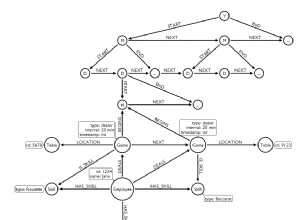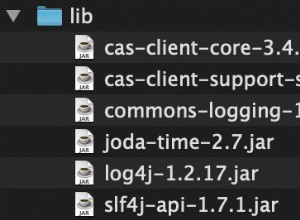Phần sau sẽ trả về tên của các khóa ngoại trong cơ sở dữ liệu hiện tại đã bị vô hiệu hóa, tức là CÓ KIỂM TRA
Đối với SQL Server 2005/2008:
select * from sys.foreign_keys where is_disabled=1
Có một số thảo luận trong câu trả lời về sự khác biệt giữa bị vô hiệu hóa và không được tin cậy. Điều gì dưới đây giải thích sự khác biệt Đây là một số mã để làm rõ sự khác biệt giữa is_disabled và isnotrusted.
-- drop table t1
-- drop table t2
create table t1(i int not null, fk int not null)
create table t2(i int not null)
-- create primary key on t2
alter table t2
add constraint pk_1 primary key (i)
-- create foriegn key on t1
alter table t1
add constraint fk_1 foreign key (fk)
references t2 (i)
--insert some records
insert t2 values(100)
insert t2 values(200)
insert t2 values(300)
insert t2 values(400)
insert t2 values(500)
insert t1 values(1,100)
insert t1 values(2,100)
insert t1 values(3,500)
insert t1 values(4,500)
----------------------------
-- 1. enabled and trusted
select name,is_disabled,is_not_trusted from sys.foreign_keys
GO
-- 2. disable the constraint
alter table t1 NOCHECK CONSTRAINT fk_1
select name,is_disabled,is_not_trusted from sys.foreign_keys
GO
-- 3. re-enable constraint, data isnt checked, so not trusted.
-- this means the optimizer will still have to check the column
alter table t1 CHECK CONSTRAINT fk_1
select name,is_disabled,is_not_trusted from sys.foreign_keys
GO
--4. drop the foreign key constraint & re-add
-- it making sure its checked
-- constraint is then enabled and trusted
alter table t1 DROP CONSTRAINT fk_1
alter table t1 WITH CHECK
add constraint fk_1 foreign key (fk)
references t2 (i)
select name,is_disabled,is_not_trusted from sys.foreign_keys
GO
--5. drop the foreign key constraint & add but dont check
-- constraint is then enabled, but not trusted
alter table t1 DROP CONSTRAINT fk_1
alter table t1 WITH NOCHECK
add constraint fk_1 foreign key (fk)
references t2 (i)
select name,is_disabled,is_not_trusted from sys.foreign_keys
GO
is_disabled có nghĩa là ràng buộc đã bị vô hiệu hóa
isnottrusted có nghĩa là SQL Server không tin tưởng rằng cột đã được kiểm tra so với bảng khóa ngoại.
Do đó, không thể giả định rằng việc kích hoạt lại ràng buộc khóa ngoại sẽ được tối ưu hóa. Để đảm bảo trình tối ưu hóa tin cậy cột, tốt nhất bạn nên bỏ ràng buộc khóa ngoại và tạo lại nó bằng WITH CHECK tùy chọn (4.)




